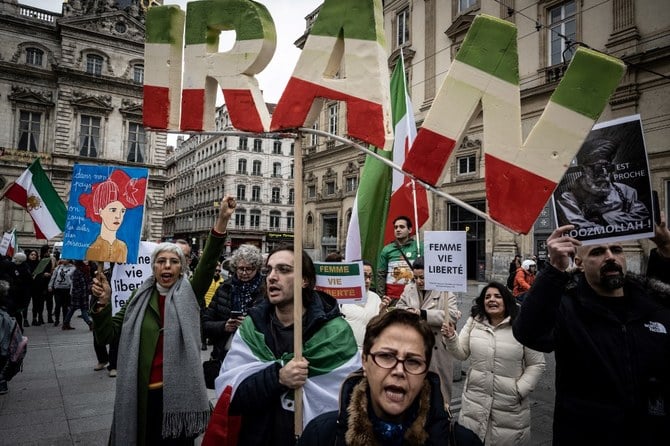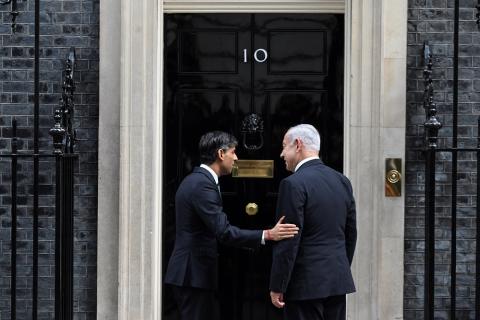
When it comes to Iran, several important developments occurred in 2022 and will likely continue into 2023.
Firstly, the Iranian regime witnessed one of its most critical uprisings in 2022. The nationwide demonstrations were precipitated by the September death of 22-year-old Mahsa Amini at the hands of the so-called morality police. Her death led to near-national mobilization and a powerful women’s movement against the theocratic establishment. People around the world saw scenes of women defiantly removing their hijab and cutting their hair in public, as well as crowds chanting “women, life, freedom.” Social media helped circulate images of the defiance of Iranian women toward the regime’s forces. Time magazine even named the Iranian women as its heroes for the year.
Protests rocked 31 of Iran’s provinces and became overwhelmingly political, with people chanting “Death to the dictator,” “Death to (Supreme Leader Ali) Khamenei,” “We are all Mahsa, fight and we will fight back,” “This year is a year of sacrifice,” “Freedom, freedom, freedom,” “From Kurdistan to Tehran, I sacrifice my life for Iran,” and “Imprisoned teachers must be freed.”
Concerns among Iranian officials increased as their hold on power was threatened. Ali Khamenei, who has the final say on all Iran’s major domestic and foreign policies, immediately backed the security forces and police, while instructing them to harshly crack down on the protesters. He called the demonstrators “thugs, robbers and extortionists.” And he declared: “Those who ignited unrest to sabotage the country deserve harsh prosecution and punishment.”
The regime deployed full-scale brute force to suppress the protesters, including children and women. It began executing protesters and bringing ambiguous charges against them, such as “moharebeh” (enmity against God), endangering the national security of the government, attempting to overthrow the government, and conspiring with “enemies” and foreigners.
Reports from the Oslo-based nongovernmental organization Iran Human Rights state that, in the recent anti-regime protests, 326 people have died and 15,000 have been arrested. Executions have already begun.
According to the UN Office of the High Commissioner for Human Rights, “some sources suggest that as many as 23 children have been killed and many others injured in at least seven provinces by live ammunition, metal pellets at close range, and fatal beatings. A number of schools have also been raided, and children arrested by security forces. Some principals have also reportedly been arrested for not cooperating with security forces. On Oct. 11, the minister of education confirmed that an unspecified number of children had been sent to ‘psychological centers’ after they were arrested allegedly for participating in anti-state protests.”
The regime delivered drones to Russia, began sending troops to Crimea and planned to deliver ballistic missiles to Moscow.
Dr. Majid Rafizadeh
A second key issue in 2022 was Iran’s nuclear program. The regime continued to defy the international community, while showing no sign that it is serious about or willing to reach an agreement to curb its nuclear program and address the threats posed by it.
Instead, the Iranian leaders made significant progress in their nuclear program. They expanded it, enriching uranium to nearly weapons-grade levels, conducting uranium metal research, development and production, and adding additional advanced uranium enrichment centrifuges.
Former Foreign Minister Kamal Kharazi pointed out Iran’s major advances, stating: “It’s no secret that we have become a quasi-nuclear state. This is a fact. And it’s no secret that we have the technical means to produce a nuclear bomb … In the past, and within just a few days, we were able to enrich uranium up to 60 percent, and we can easily produce 90 percent-enriched uranium.”
Iran also sought assistance from its ally, Russia, to bolster its nuclear program, according to US intelligence officials. The regime even announced that it would not allow the International Atomic Energy Agency to see images of centrifuges. And a joint statement issued by the UK, France and Germany stressed that Tehran “has no credible civilian need for uranium metal R&D and production, which are a key step in the development of a nuclear weapon.”
The third critical issue was Iran’s increasing involvement in the Russia-Ukraine war, which brought about condemnation from the EU and US. The regime delivered drones to Russia, began sending troops to Crimea to assist the Russian army and planned to deliver ballistic missiles to Moscow.
In 2023, the nationwide uprising and opposition to the regime will most likely continue. Also, the regime will likely ratchet up its weapons delivery to Russia, as well as attempt to become a state armed with nuclear weapons. So, the international community must show more support for the Iranian people, particularly women, and counter the Iranian regime’s efforts to further advance its nuclear program and deliver weapons to Russia.
Dr. Majid Rafizadeh is a Harvard-educated Iranian-American political scientist. Twitter: @Dr_Rafizadeh
Disclaimer: Views expressed by writers in this section are their own and do not necessarily reflect Arab News" point of view












